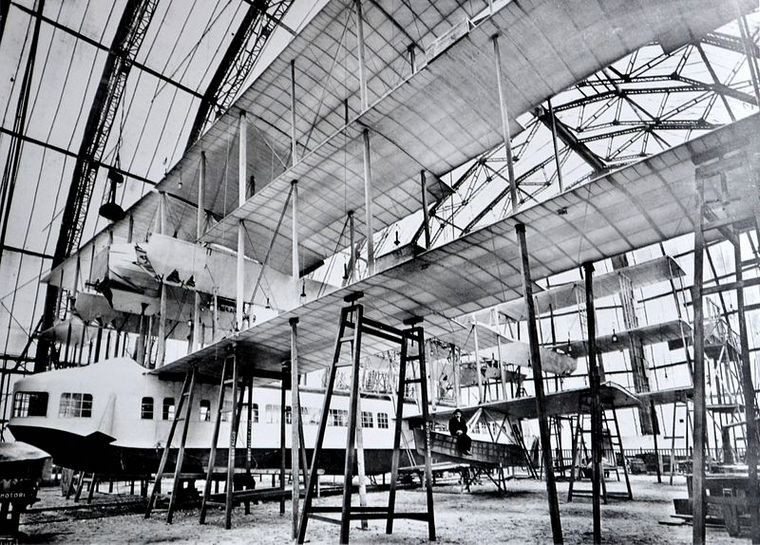Early Aviation Oddities-The Caproni Ca.60
By Willie Bodenstein

Caproni became a famous aircraft designer and manufacturer during the First World War. As early as 1913 Caproni said during an interview that "aircraft with a capacity of one hundred and more passengers" would soon become a reality.
His Caproni aviation company had major success, especially in the field of heavy multi-engine bombers during WWI.

After the war, Caproni began designing a huge and ambitious passenger flying boat that featured three wing sets of three wings per set mounted on top of the hull with booms that connected the sets. Power was from eight Liberty L-12 engines each producing 400 hp (294 kW). The engines were arranged in two sets of four; the first two were mounted in tractor configuration on the first wing set. Two more in pusher configuration was mounted behind these. Similarly, the remaining four were mounted on the last, third, wing set.
The two engine nacelles also housed a cockpit for one flight engineer each. The flight engineers controlled the power output of the engines in response to the orders given by the pilots by means of a complex system of lights and indicators located on electrical panels. Fuel for the engines were housed in tanks installed in the cabin roof and propelled to the engines by wind-driven pumps.
The main hull, which contained the enclosed passenger cabin, featured wide panoramic windows hung below the three sets of wings. The open-air cockpit could be reached from inside the fuselage by a ladder which accommodated a pilot in command and a co-pilot side-by-side. A lavatory was situated at the rear end of the fuselage.

The Caproni Ca.60, which was intended to become a 100-passenger transatlantic airliner, first took the sky on 12 February 1921 from Lake Maggiore for its brief maiden flight. Its second flight was on 4 March. Sadkly, shortly after take-off, the aircraft crashed on the water surface and broke up upon impact. The Ca.60 was further damaged when the wreck was towed to shore and, in spite of Caproni's intention to rebuild the aircraft, the project was soon abandoned because of its excessive cost.
Specifications (Ca.60)
General characteristics:
Crew: 8
Capacity: 100 passengers
Length: 23.45 m (77 ft)
Wingspan: 30.0 m (98 ft 5 in)
Height: 9.15 m (30 ft)
Wing area: 750.00 m² (8073 ft²)
Empty weight: 14,000 kg (30,865 lb)
Max. take-off weight: 26,000 kg (57,320 lb)
Powerplant: 8 × Liberty L-12 liquid-cooled V12 engines, 294 kW (400 hp) each
Performance:
Cruise speed: 130 km/h (70 kn, 80 mph)
Range: 660 km (360 nmi, 410 mi)
|
   |























